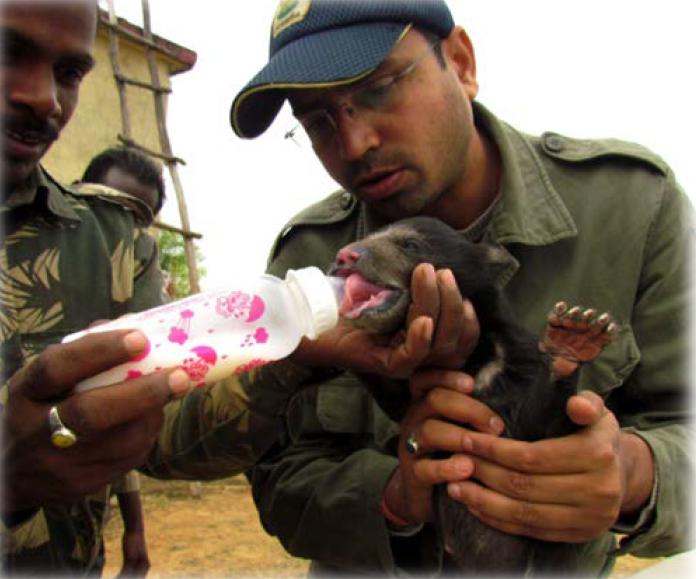Prakash Chandra Mardaraj
Other projects
11 Oct 2017
Finding Space for Coexistence of Human and Sloth Bears in Balasore, Eastern India
The project’s main intentions are to identify the key issues of conflict arising due to the Rajnilgiri Sloth bear population and seek solutions by community participations for the co-existence of human and Sloth bear in a human dominated landscape.

Rehabilitation.
Sloth bear is listed as ‘Vulnerable’ in Appendix I of CITES and is completely protected under Schedule I of the Indian Wildlife (Protection) Act, 1972. Sloth bears play an important role in forest ecosystems as seed dispersers and nutrient providers. The past ranging areas of sloth bear are now under human alteration in form of settlements, agricultural and under other developmental projects; consequently sloth bears come in interaction with human during their traditional movement areas. Consequently Sloth bear population is declining in its ranges. Villagers living at the fringe of forest are vulnerable to bear conflicts.
The proposed study is focused on the Nilgiri wildlife range, under Balasore wildlife Division, Odisha, Eastern India. Earlier, the distribution of sloth bear covered almost the entire Odisha state except the coastline, but in last two decades, its distributional range shrinks to its half due to massive habitat destruction by mining and deforestation. In Nilgiri wildlife range, there are sloth bear from ages, but the conflicts were not so high. The fact that there is an increase in the biotic pressure, encroachment on the forest land and continuous habitat degradation, the sloth bear populations have become overabundant and showing an increasing in conflict trend. The sloth bear and the people both are disturbed with this conflict situation which is rapidly on a rise to an alarming level. It is likely that the sloth bears now start straying out from the protected forests every now and then into cultivation areas and human habitations and thus this results in serious human-sloth bear conflict in form of human casualties. Socio- economic loss to human due to human-Sloth bear interaction creates a negative attitude (retaliation killing of Sloth bears) towards protection and conservation of this magnificent and endangered mammal in its natural habitat.
The ecological study on conflict will enlighten the core problems of the interaction and educating the local people of the affected villages will help to reduce bear-human conflicts and enhance the conservation ethics among natives. Thus, habitat improvements with community-based awareness programmes would be helpful in alleviating such conflicts. The project would come up with ways and means of using the forests and other land resources in a sustainable way that would minimize the conflicts. This project will definitely safe some lives.